June 30, 2025
Prelims Pointers
June 30, 2025
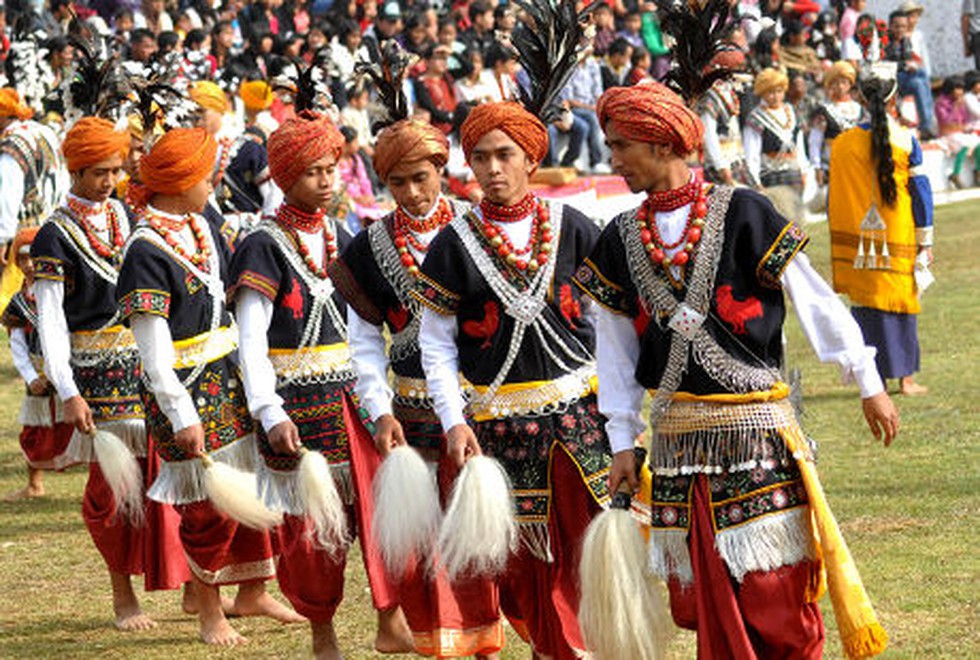
About Khasi People:
- They are an indigenous tribe primarily living in the Khasi and Jaintia hills of Meghalaya.
- The Indian state of Assam and neighboring country of Bangladesh also host small populations of this tribe.
- They are known to be one of the earliest ethnic groups in the region and are believed to have migrated to the northeastern hills from Tibet or Burma around 500 B.C.
- They have a number of clans such as Lyngdoh, Diengdoh, Marbaniang, Shiemliah, Lapang, and Songkali.
- The Khasi are generally people of short stature.
- Language:
- The Khasi language, known as “Khasi,” is an integral part of their identity.
- While English and Hindi are also spoken, Khasi remains the primary language for daily communication within the community.
- One of the most striking aspects of the Khasi tribe is their matrilineal society.
- In Khasi culture, lineage and inheritance are passed down through the mother’s side of the family.
- Women play a crucial role in decision-making processes and the management of family affairs.
- Religion: A vast majority of the Khasis are Christians, while there are some groups of Hindus and Muslims too among them.
- Livelihood:
- Cultivation has been their primary source of livelihood for ages.
- In the present day, however, Khasi youth have entered into many other professional fields and are successful doctors, engineers, businessmen or women, teachers, and more.
- They are officially recognized as a "Scheduled Tribe" in India and have certain privileges.
- They are allowed to practice their customary laws and also enjoy tax benefits not available elsewhere in India.
- They have land designated for their use and a quota system that reserves seats for them in education and jobs.
- The Khasi Hills Autonomous District Council is the official body protecting the unique laws of these people.
- Festivals and Celebrations:
- Shad Suk Mynsiem: A spring festival celebrating nature, fertility, and gratitude. Men and women participate in a vibrant dance, wearing traditional attire.
- Nongkrem Dance Festival: A five-day religious festival where the Khasi people offer prayers to the divine for a prosperous harvest.
- Behdienkhlam Festival: Celebrated to drive away evil spirits and bring good health and fortune to the community.
- Traditional Khasi music features instruments like Duitara (a stringed instrument) and Tangmuri (a bamboo flute).
- Living Root Bridges:
- Perhaps the most famous example of the Khasi tribe’s connection to nature is the living root bridges.
- These extraordinary architectural marvels are formed by training the roots of the Ficus elastica tree to grow in a specific direction, creating sturdy, natural bridges.
- These bridges can span up to 100 feet and are known to last for centuries.
- The most famous of these bridges, the “Double-Decker Living Root Bridge,” is located in the village of Nongriat.
Prelims Pointers
June 30, 2025

About Central Sector Scheme of Scholarship for College and University Students (CSSS):
- “Pradhan Mantri Uchchatar Shiksha Protsahan (PM-USP) Central Sector Scheme of Scholarship for College and University Students" is a scholarship scheme by the Department of Higher Education, Ministry of Education.
- The primary objective of the scheme is to provide financial assistance to meritorious students from poor families to meet a part of their day-to-day expenses while pursuing higher studies.
- The scholarships are awarded based on the results of the Higher Secondary/Class 12th Board Examination.
- Allocation of Scholarships:
- A maximum of 82,000 fresh scholarships (41,000 for boys and 41,000 for girls) per annum are provided for pursuing Graduate/ Postgraduate degrees in colleges and universities and for professional courses, such as medical, engineering, etc.
- The total number of scholarships is divided amongst the State Education Boards based on the State's population in the age group of 18-25 years, after segregating the share of CBSE and ICSE on the basis of the number of students passing out from various Boards in the country.
- The number of scholarships allotted to a State Education Board is distributed amongst pass-outs of the Science, Commerce, and Humanities streams in the ratio of 3:2:1. In case of a shortfall in the number of applications, the scholarship slots could be interchanged.
- Benefits: Rate of Scholarship
- ₹12,000/- per annum at the graduation level for the first three years of college and university courses.
- ₹20,000 per annum at the post-graduation level.
- ₹20,000/- per annum in the 4th and 5th years to the students pursuing professional courses, in cases where the duration of the course is five (5) years/integrated courses.
- Students pursuing technical courses such as B.Tech, B.Engg. will get a scholarship up to graduation level only i.e. ₹12,000 p.a. for 1st, 2nd, and 3rd years and ₹20,000 in the 4th year.
- Mode of Disbursal: The scholarship will be disbursed directly into the savings bank accounts of the beneficiaries through Direct Benefit Transfer (DBT).
- Eligibility:
- The applicant must be pursuing regular degree courses.
- The applicant must be pursuing courses at colleges/institutions recognized by the All India Council for Technical Education and the respective regulatory bodies
- The gross parental/family income of the applicant should not exceed ₹450,000/- per annum.
- For renewal of scholarship in each year of study, besides getting at least 50% marks in the Annual Examination, maintenance of adequate attendance should be at least 75%.
- The students are required to have bank accounts opened, especially in their name.
- Application must be verified by the student’s institution:
- CBSE has made it clear that all applications must be verified by the student’s college or university.
- If required, students must show their original documents to their institution.
- Without verification, the application will be considered invalid.
- Exclusions:
- Students who are pursuing correspondence or distance mode or pursuing diploma courses are not eligible.
- Students who are already availing the benefit from any other scholarship schemes, including state-run scholarship schemes/fee waiver & reimbursement schemes, are not eligible.
Prelims Pointers
June 30, 2025
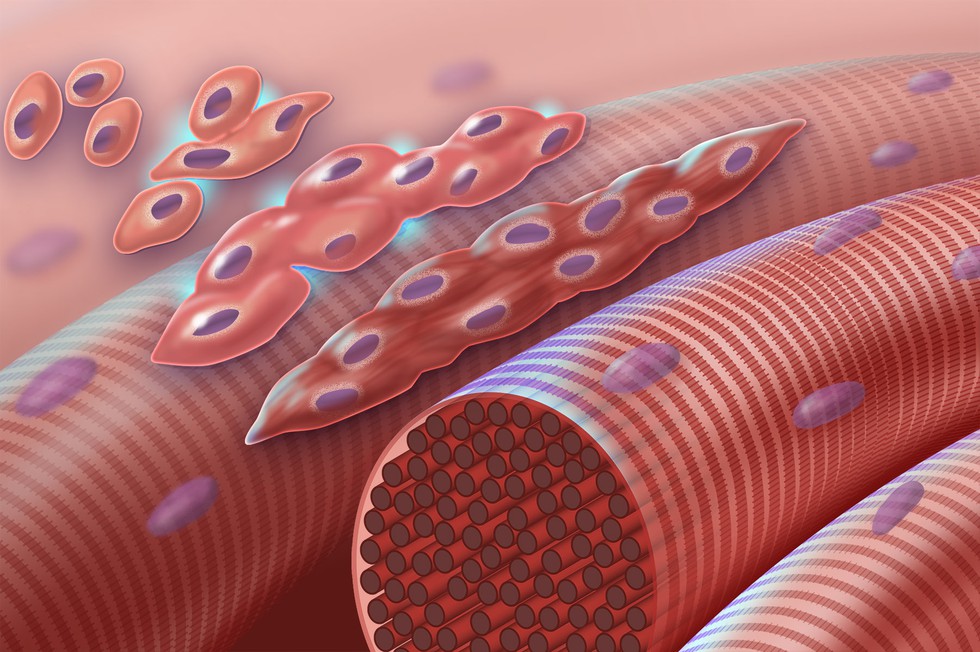
About Myogenesis:
- It is the process by which muscle fibers are formed.
- It is a complex and highly regulated process that is crucial for the development and maintenance of skeletal muscle tissue.
- The significance of myogenesis lies in its role in forming the musculature of the body, enabling movement, maintaining posture, and regulating metabolism.
- Myogenesis involves the differentiation of precursor cells, known as myoblasts, into multinucleated muscle fibers.
- This process is not only essential during embryonic development but also plays a critical role in muscle repair and regeneration throughout life.
- The study of myogenesis is important for understanding muscle development and related disorders, as well as for developing therapeutic strategies for muscle diseases.
- Overview of the Myogenic Process:
- The myogenic process can be broadly divided into several stages: myoblast proliferation, differentiation, and fusion into multinucleated myotubes, followed by maturation into muscle fibers.
- Each stage is tightly regulated by a complex interplay of transcription factors, signaling pathways, and cellular processes.
- Role of Key Transcription Factors:
- Key transcription factors such as MyoD and Myf5 play a crucial role in regulating myogenesis.
- These myogenic regulatory factors (MRFs) are essential for the specification of myoblasts and their differentiation into muscle fibers.
- MyoD is a master regulator that drives myoblast differentiation by activating the expression of muscle-specific genes.
- Myf5 is involved in the early stages of myogenesis, regulating myoblast proliferation and specification.
- Cellular Processes Regulating Myogenesis: Cellular processes such as cell proliferation and differentiation are tightly regulated during myogenesis.
- Cell Proliferation: Myoblast proliferation is a critical step that precedes differentiation. It ensures an adequate number of myoblasts for muscle formation.
- Cell Differentiation: Myoblast differentiation involves a series of molecular changes that enable myoblasts to fuse and form multinucleated myotubes.
Prelims Pointers
June 30, 2025
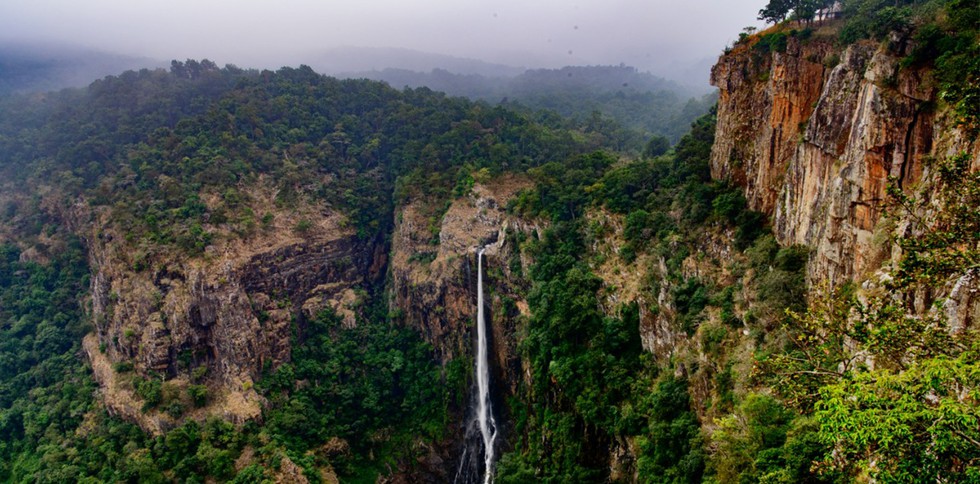
About Similipal Tiger Reserve (STR):
- It is located within the Mayurbhanj District, in the northernmost part of Odisha.
- Situated in the Deccan Peninsular Bio-geographic Zone, it harbours a unique blend of Western Ghats, Eastern Ghats, and eastern Himalayan biodiversity.
- It is spread over 2750 sq.km. and has some beautiful waterfalls like Joranda and Barehipani.
- It comes under the Mayurbhanj Elephant Reserve that includes the adjacent Hadgarh and Kuldiha Wildlife Sanctuaries.
- It is surrounded by high plateaus and hills, the highest peak being the twin peaks of Khairiburu and Meghashini (1515 m above mean sea level).
- The terrain is mostly undulating and hilly, interspersed with open grasslands and wooded areas.
- History and Current Status:
- Declared a Tiger Reserve in 1956 and included under Project Tiger in 1973.
- Recognised as part of the World Network of Biosphere Reserves by UNESCO in 2009.
- Drainage:
- At least twelve rivers cut across the plain area, all of which drain into the Bay of Bengal.
- The prominent among them are Burhabalanga, Palpala Bandan, Salandi, Kahairi, and Deo.
- It is also home to various tribes, including Kolha, Santhala, Bhumija, Bhatudi, Gondas, Khadia, Mankadia, and Sahara.
- Vegetation: The vegetation is a mix of different forest types and habitats, with Northern tropical moist deciduous dominating some semi-evergreen patches.
- Flora:
- The floristic composition indicates a connecting link between South Indian and North Eastern Sub-Himalayan Species.
- Sal is the dominant tree species
- The park also has extensive grasslands that are grazing grounds for many of the herbivores.
- These forests boast of many plants that have medicinal and aromatic properties.
- Fauna:
- It is known for the tiger, elephant, and hill mynah.
- It holds the highest tiger population in Odisha.
- Apart from the tiger, the major mammals are the leopard, sambar, barking deer, gaur, jungle cat, wild boar, four-horned antelope, giant squirrel, and common langur.
Prelims Pointers
June 30, 2025
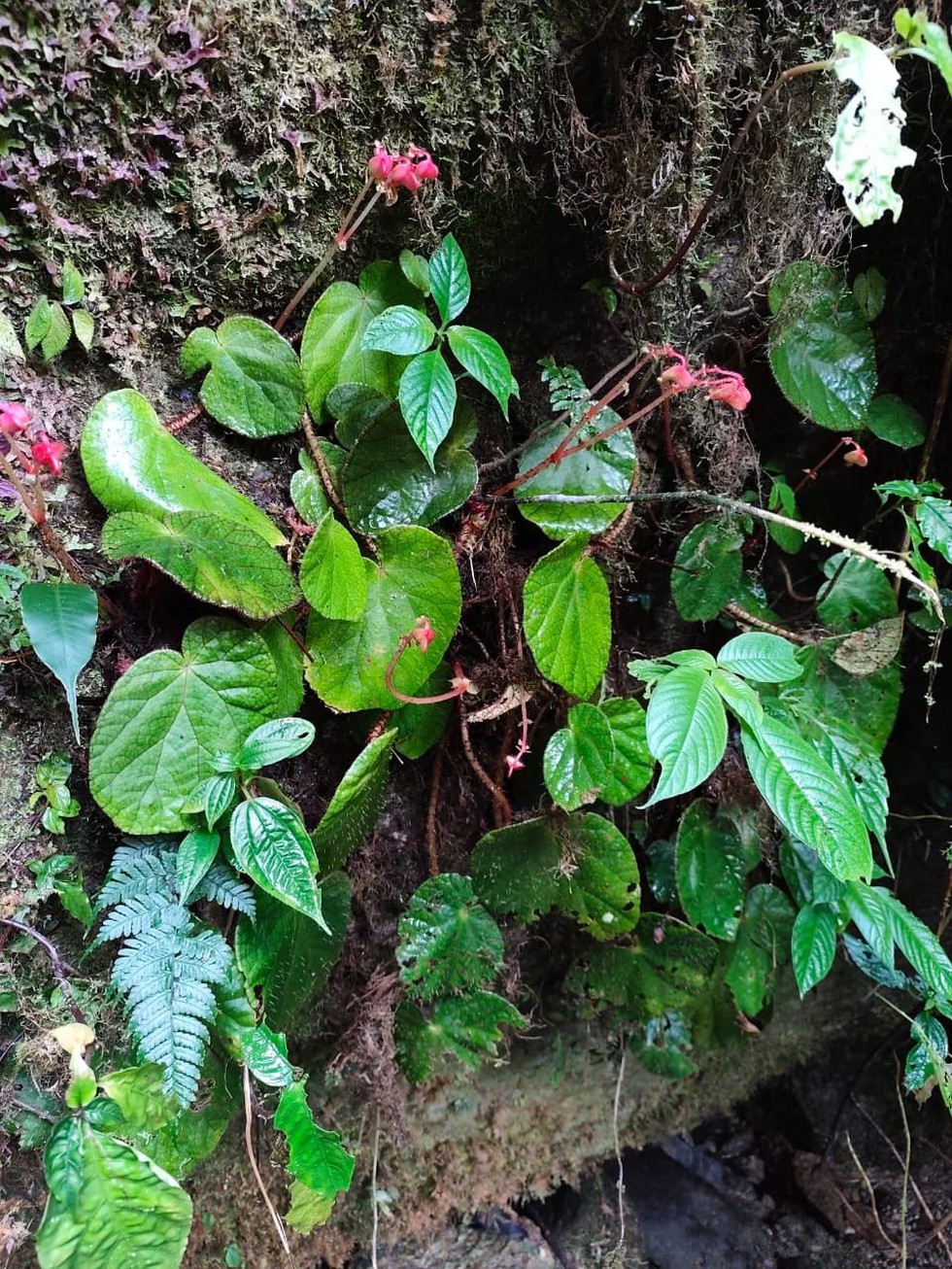
About Begonia nyishiorum:
- It is a new species of flowering plant.
- It is endemic to the East Kameng district of Arunachal Pradesh.
- It grows in moist, shaded mountain slopes between 1,500 and 3,000 metres above sea level.
- It is instantly recognisable by the dense crimson, fringed scales that sheath its light green petioles-an indumentum previously unseen in any Asian begonia.
- Currently known only from two forest sites in East Kameng, the species’ petiole “fringe” sets it apart from over 2,150 accepted begonias worldwide.
- The epithet nyishiorum honours the Nyishi community whose traditional stewardship protects these high-elevation forests.
- The species is assessed as Data Deficient according to the IUCN Red List criteria.
Prelims Pointers
June 30, 2025
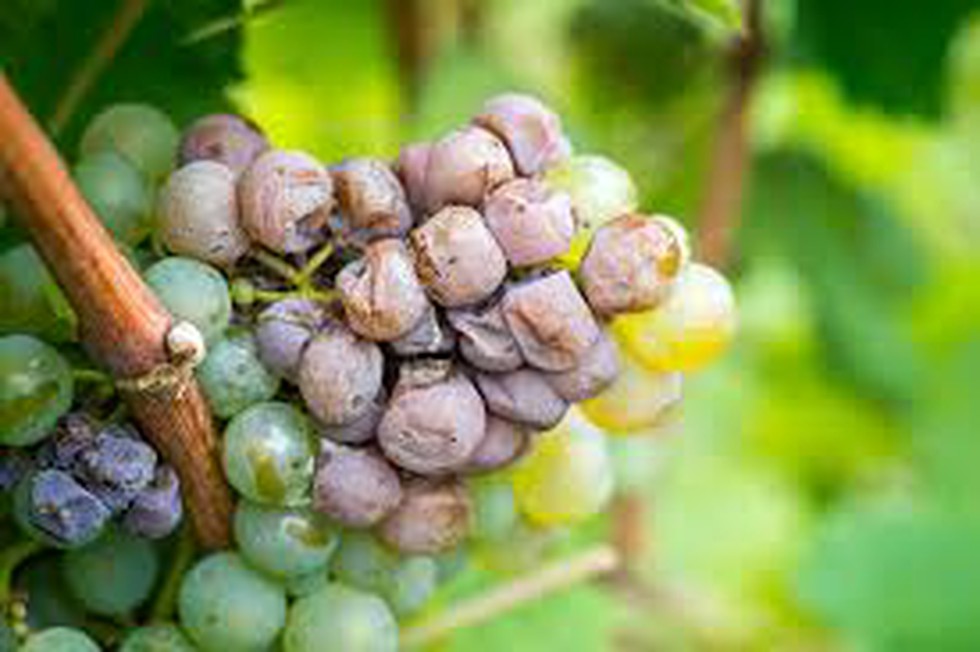
About Botrytis Fungi:
- It is a widespread necrotrophic fungal pathogen.
- Botrytis cinerea needs to obtain nutrients before it can penetrate a plant.
- Dead or damaged plant tissue, such as old flower petals, can provide nutrients that the fungus needs.
- Owing to this feeding source, the infection gains strength and spreads to healthy plant tissues. A brownish rot develops in newly infected tissues, which is how Botrytis cinerea deteriorates plants.
- These fungi usually attack blossoms and fruit, but they can also cause rot and blight on buds, stems, leaves, roots, bulbs, and tubers.
- The fungus typically targets fragile, wounded, aging, or dead plant parts.
- It infects grapes, penetrates the skin, causes the berries to lose water by evaporation and shrivel up, and thus concentrates the sugars and flavours in them.
- It was also found recently that this fungi exhibits an unusual idiosyncrasy.
- In these fungi, no single nucleus contains a complete set of chromosomes. Instead, the chromosome set is distributed across two or more nuclei, and any one nucleus contains only a subset.
- It requires warm temperatures, high humidity, and prolonged wetness which facilitate easy fungus inoculation.
- Additionally, it can release organic acids, such as oxalic acid, which acidify the surrounding environment.
Prelims Pointers
June 30, 2025

About GPS Interference:
- It refers to spoofing or jamming, two types of deliberate cyber-attacks on Global Positioning System (GPS) signals, which disrupt or deceive vehicles’ navigation systems.
- While both are often used synonymously with each other, spoofing and jamming refer to slightly different kinds of interference.
- GPS jamming, also known as GPS intervention, involves a device (jammer) emitting strong radio signals on GPS frequencies in order to overpower weaker signals. This disrupts the functioning of GPS systems by rendering receivers unable to determine location or time.
- GPS spoofing involves a device transmitting signals on the same frequencies used by GPS satellites, overwhelming or blocking the GPS receivers from acquiring or maintaining the right satellite signals.
- Unlike jamming, which disrupts signals entirely, spoofing deceives the receiver into trusting false data.
- GPS interference can disrupt both military and civilian transport operations from afar, without physical confrontation.
- GPS interference can occur due to various reasons, not all of them malicious.
- These include electromagnetic radiation from nearby devices, adverse atmospheric conditions like ionospheric disturbances, solar activity (such as flares), and, of course, intentional jamming/spoofing.
- Most often, countries with advanced electronic warfare capabilities and involved in an active conflict are responsible.
- While interference may or may not be targeted at civilian vessels, those in the vicinity, relying on the same GPS infrastructure, are nonetheless susceptible.
Prelims Pointers
June 30, 2025

About Trachoma:
- It is a bacterial infection caused by the bacterium Chlamydia Trachomatis which affects the eyes.
- How does it spread?
- It is contagious; spreading through contact with the eyes, eyelids, nose or throat secretions of infected people, if left untreated it causes irreversible blindness.
- It is found in communities who are living in poor environmental conditions.
- The World Health Organisation (WHO) has termed Trachoma as a neglected tropical disease and its estimation suggests that 150 million people worldwide are affected by Trachoma.
- Initiatives of Government of India
- The Government of India launched the National Trachoma Control Program in 1963 and later on Trachoma control efforts were integrated into India’s National Program for Control of Blindness (NPCB).
- As a result, in 2017, India was declared free from infectious However, surveillance continued for trachoma cases in all the districts of India from 2019 onwards till 2024.
- The National Trachomatous Trichiasis (TT only) Survey was also carried out in 200 endemic districts of the country under National Programme for Control of Blindness & Visual Impairment (NPCBVI) from 2021-24, which was a mandate set by WHO in order to declare that India has eliminated Trachoma as a public health problem.
- To eliminate trachoma as a public health problem, WHO recommends the SAFE strategy.
- The SAFE strategy includes: Surgery to treat the blinding stage (trachomatous trichiasis); Antibiotics to clear the infection, particularly the antibiotic azithromycin; Facial cleanliness and Environmental improvement, particularly improving access to water and sanitation.
Prelims Pointers
June 30, 2025
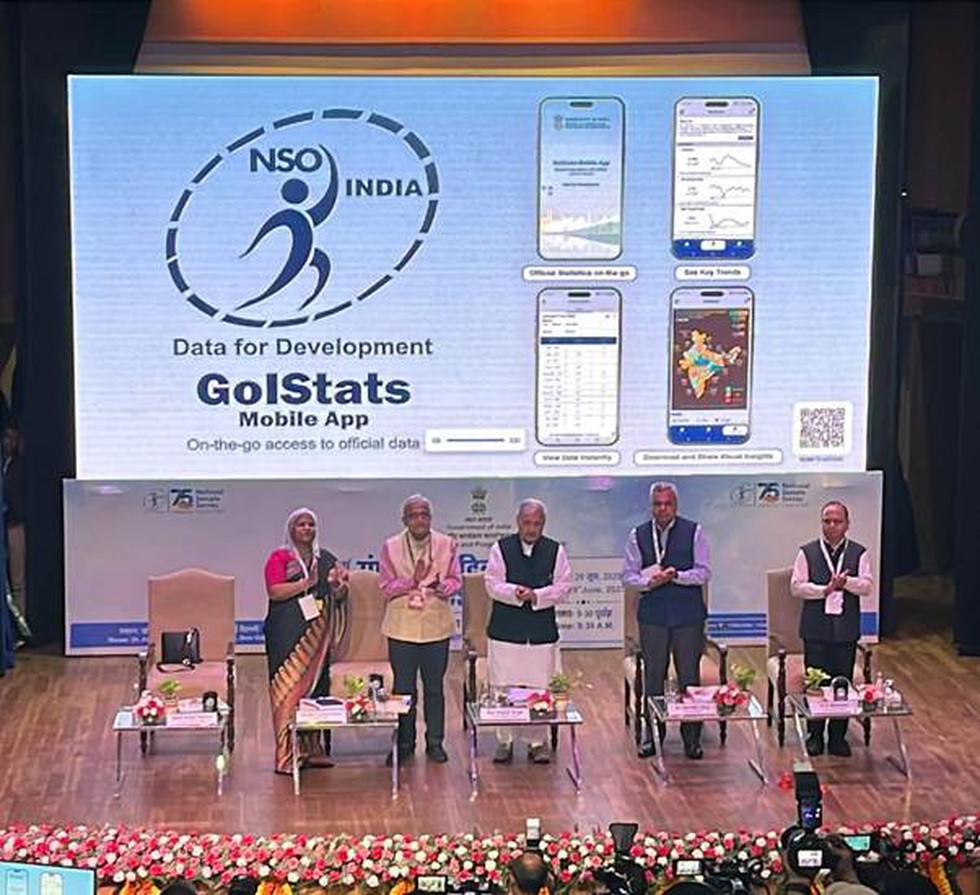
About GoIStats App:
- The GoIStats mobile application represents NSO's vision of creating an all-encompassing data ecosystem where every stakeholder can seamlessly access official data on the go.
- Features of GoIStats App
- It has an interactive "Key Trends" dashboard showcasing important socio-economic indicators with dynamic visualizations of critical metrics including GDP, inflation, employment data.
- Users gain direct access to NSO's database through the "Products" section, featuring one-click CSV downloads.
- It also has advanced filtering and search capabilities with comprehensive metadata, and mobile-optimized data tables are also available for seamless viewing.
- It contains visual data storytelling capabilities including a curated infographics section that transforms complex statistics into digestible insights, interactive charts and graphs with contextual explanations, social sharing features to promote data literacy across communities.
- It provides users with the access to NSO reports and publications with instant download functionality. Regular updates aligned with NSO's publication calendar are provided to the user with app notification facility.
Prelims Pointers
June 30, 2025

About Football for Schools (F4S) Programme:
- It is an ambitious programme run by Fédération Internationale de Football Association (FIFA) in collaboration with UNESCO,
- It aims to contribute to the education, development and empowerment of around 700 million
- It seeks to make football more accessible to both boys and girls around the world by incorporating football activities into the education system, in partnership with relevant authorities and stakeholders.
- It has been designed to promote targeted life skills and competencies through football and contribute to the United Nations’ Sustainable Development Goals (SDGs) and other priorities.
- The F4S Programme is aligned with global sport, education and health policies, including UNESCO’s Kazan Action Plan, the Education 2030: Incheon Declaration and Framework of Action, and the World Health Organization (WHO) Global Action Plan on Physical Activity (GAPPA).
- Objectives of the Football for Schools Programme:
- Empower learners (boys and girls) with valuable life skills and competencies
- Empower and provide coach-educators with the training to deliver sport and life-skills activities
- Build the capacity of stakeholders (schools, MAs and public authorities) to deliver training in life skills through football
- Strengthen the cooperation between governments, MAs and participating schools to enable partnerships, alliances and intersectoral collaboration
- It was launched in mid-2019 with pilot projects in Puerto Rico and Lebanon.
- In India, the programme is implemented by the Department of School Education and Literacy, Ministry of Education (DoSEL), with support from the All India Football Federation (AIFF) and the Sports Authority of India (SAI).
June 29, 2025
Prelims Pointers
June 29, 2025
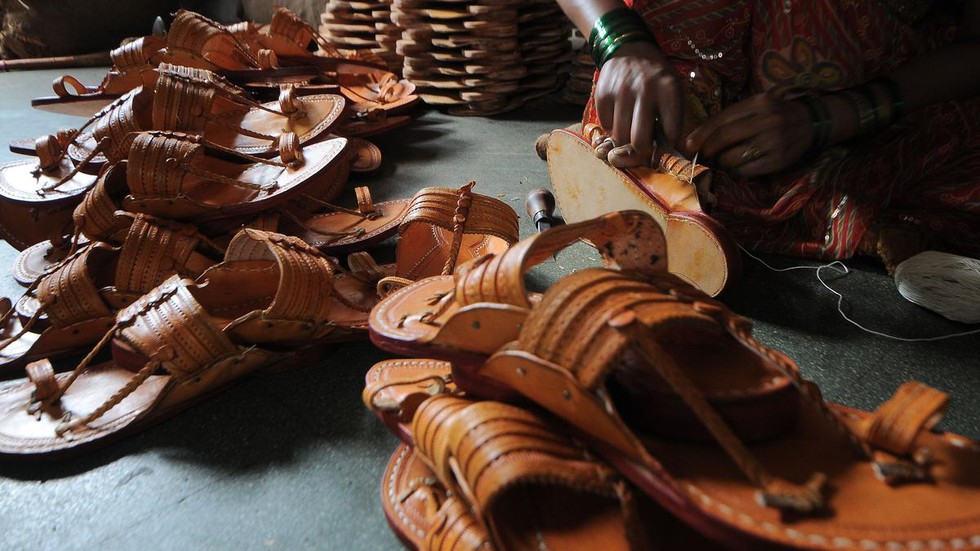
About Kolhapuri Chappals:
- Kolhapuri Chappals are named after the city of Kolhapur in Maharashtra, where they originated.
- They are handmade leather sandals with a Geographical Indication (GI) tag.
- They are renowned for their intricate, handcrafted designs.
- They have been produced in the Kolhapur region of India since the 13th century.
- Handcrafted with leather, Kolhapuri usually have open-toed, T-strap designs.
- The original Kolhapuri is made from 100% leather. This leather can be from cow, buffalo, or even goat.
- These handmade leather footwear are then tanned using vegetable dyes, giving them a soft feel free of any allergens.
- The traditional Kolhapuris do not have many different color options and can be seen only in shades of tan and deep brown. Similarly, they had three finishes: oil, natural, or polish.
- Traditional artisans can take up to six weeks to make a pair of chappals.
- Their robust construction makes them suitable for various terrains and weather conditions.
- The leather used in Kolhapuri chappals molds to the shape of your feet over time, providing a custom fit that enhances comfort.
- With proper care, they can serve you for many years, making them a sustainable and cost-effective choice in the long run.
Prelims Pointers
June 29, 2025

About THAAD Missile System:
- The THAAD (Terminal High Altitude Area Defense) is an advanced missile defence system developed by the United States to intercept and destroy short-, medium-, and intermediate-range ballistic missiles during their terminal phase (the last phase of their flight).
- It was developed by the U.S. after their experience of Iraq’s Scud missile attacks during the Persian Gulf War in 1991.
- It is a key element of U.S. ballistic missile defense (BMD).
- It is the only US system capable of intercepting targets within (endoatmospheric) and outside (exoatmospheric) the atmosphere.
- Features:
- Each THAAD battery is made up of five parts: 48 interceptor missiles, six truck-mounted launchers, a radar, a command-and-control platform, and 95 soldiers.
- The THAAD missile is 6.17 m in length and is equipped with a single-stage solid-fuel rocket motor with thrust vectoring.
- There is no warhead on the missile, which destroys its targets by the force of its impact.
- The launch weight is 900 kg.
- The THAAD Radar is an X-band radar, the world's largest ground/air-transportable X-band radar. The radar has the capability to acquire missile threats at ranges up to 1,000 km.
- The target object data and the predicted intercept point are downloaded to the missile prior to launch. The updated target and intercept data are also transmitted to the missile in flight.
- The THAAD missile can destroy aerial targets at ranges from 150 to 200 km and can reach a maximum altitude of 150 km.
- It is interoperable with other Ballistic Missile Defense (BMD) systems.
Prelims Pointers
June 29, 2025
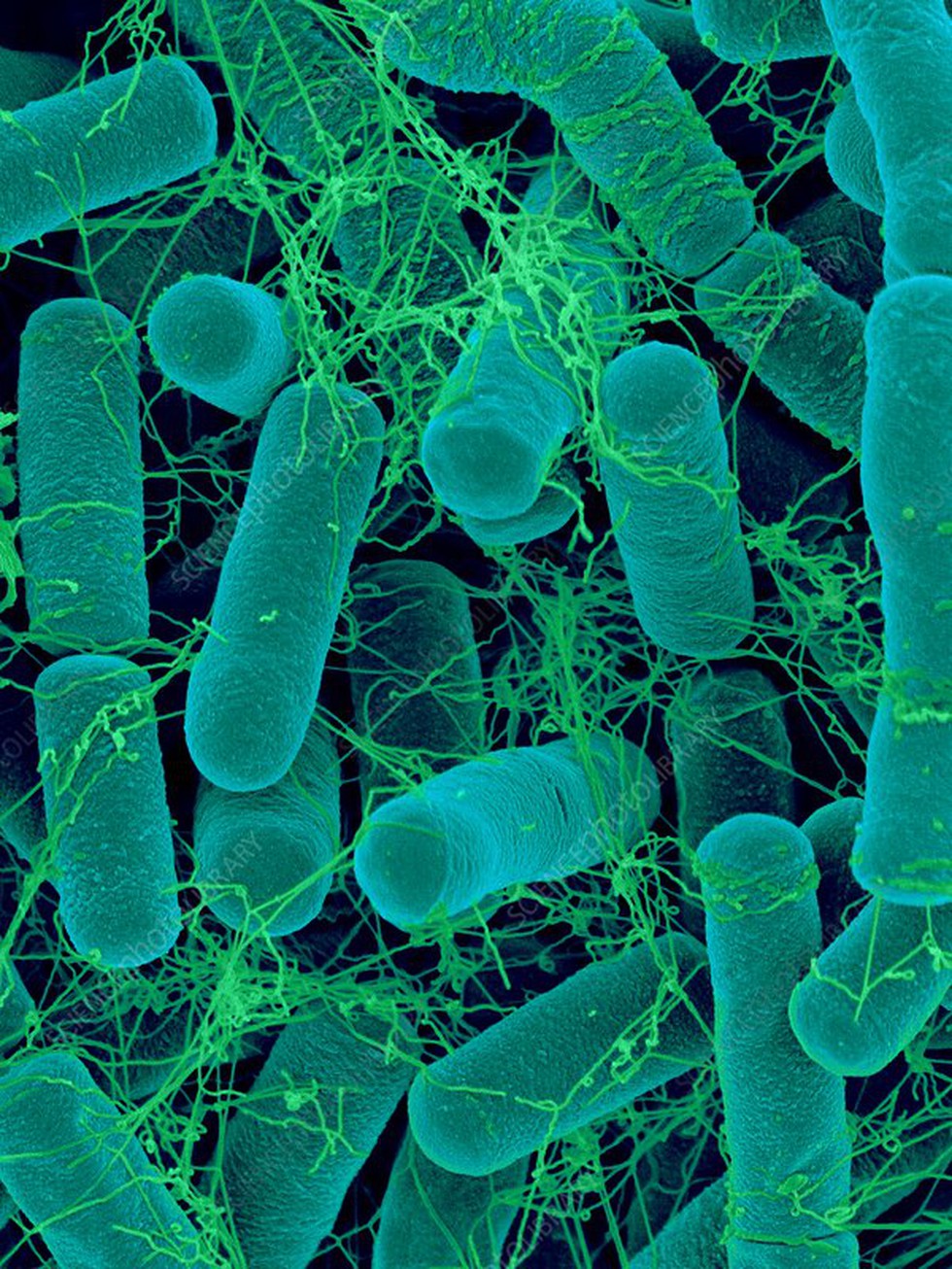
About Bacillus ayatagriencsis:
- It is a new species of soil bacteria.
- It was isolated from the rhizosphere (the region surrounding plant roots, populated with microorganisms) of mulberry plants, a key component of the region's sericulture and farming systems.
- It exhibits strong antimicrobial properties and significantly enhances seed germination, indicating its immense potential in promoting plant health and productivity.
- Early tests suggest it can serve as a powerful agent in organic farming systems, reducing the need for chemical inputs.
- The bacterium’s ability to promote seed germination and bolster plant health comes as a boost for local farming communities struggling with soil degradation and crop vulnerability.
- The name of the bacteria has been drawn from Sanskrit, with ‘ayata’ linked to growth and ‘agriensis’ symbolising its agricultural relevance.
Prelims Pointers
June 29, 2025
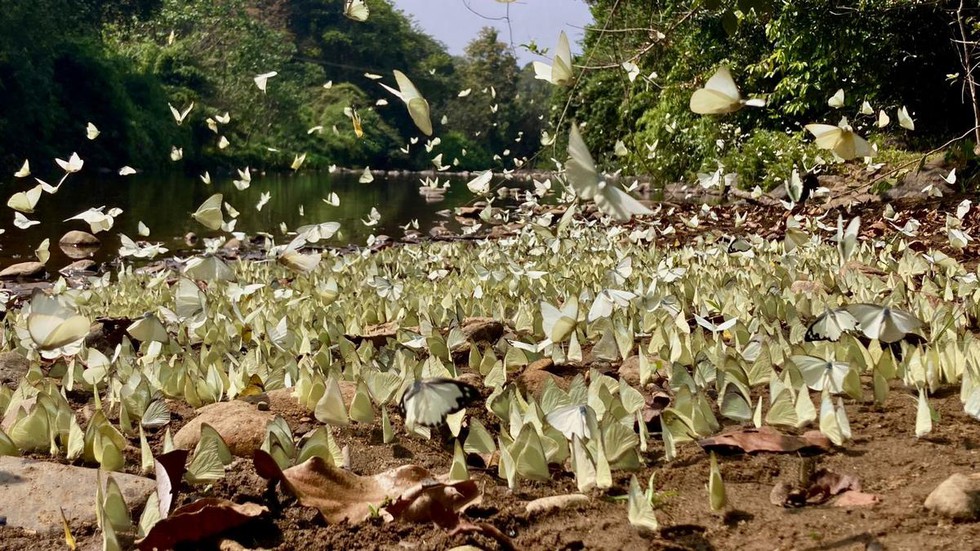
About Aralam Butterfly Sanctuary:
- It is located in the Kannur District of Kerala.
- It is spread over 55 sq. km. area of forests on the Western Ghats.
- The Cheenkannipuzha River forms the main drainage system of Aralam.
- Vegetation: Tropical and semi-evergreen forests.
- It is home to over 266 species of butterflies, accounting for more than 80 percent of all butterflies in Kerala. Some of these are unique to this region, while others are endangered.
- Between October and February, the sanctuary transforms into a living rainbow when butterflies migrate here from the lower slopes of the Western Ghats.
- An amazing scene is created during this season, also known as the time for the Common albatross butterfly, when hundreds of butterflies fill the air and fly amid tall trees, orchids, and wildflowers.
- Every January or February, the sanctuary holds a Butterfly Migration Study, which celebrates this seasonal movement and deepens our understanding of these pollinators.
- In addition to butterflies, Aralam is home to several animals, including elephants, giant squirrels, leopards, and a variety of birds.
Prelims Pointers
June 29, 2025

About Secondary Pollutants:
- Secondary pollutants are pollutants which form in the atmosphere.
- These pollutants are not emitted directly from a source (like vehicles or power plants).
- Pollutants that are emitted into the environment from a source are called primary pollutants.
- Secondary pollutants form as a result of the pollutants emitted from these sources reacting with molecules in the atmosphere to form a new pollutant.
- Examples of secondary pollutants are ozone and secondary organic aerosol (haze).
- Secondary pollutants are harder to control because they have different ways of synthesizing, and the formation is not well understood.
- They form naturally in the environment and cause problems like photochemical smog.
- The phenomenon of photochemical smog is a result of the interactions of primary pollutants with other molecules in the air, such as molecular oxygen, water, and hydrocarbons.
- These combine to form yellow clouds that are harmful to humans.
Prelims Pointers
June 29, 2025
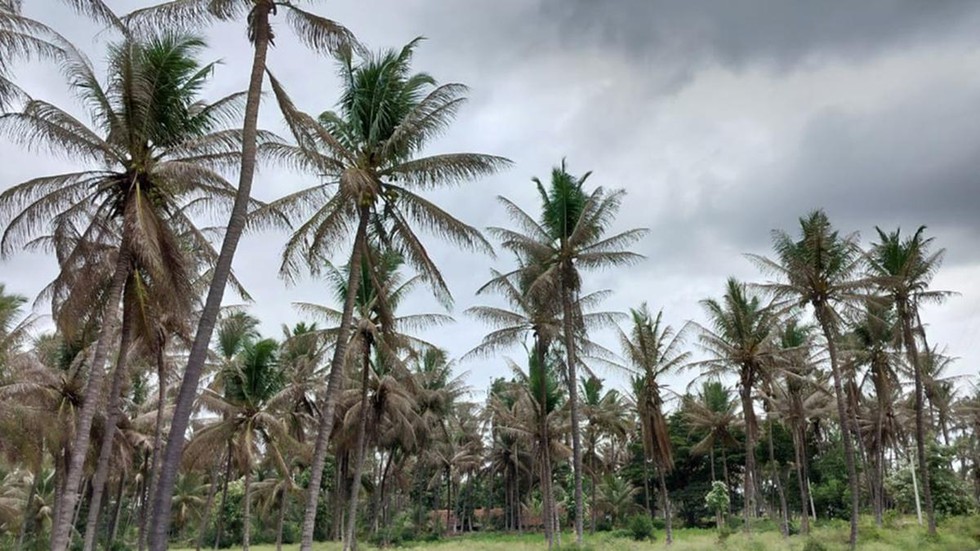
About Black-headed caterpillar Disease:
- It causes serious damage to coconut trees in both coastal and inland regions.
- The caterpillars reside in silken galleries built on the undersides of leaves and consume the green portions, reducing the plant’s photosynthetic ability.
- Symptoms:
- It infests coconut of all age groups and is a prolific feeder of coconut leaves.
- Dried up patches on leaflets of the lower leaves, only three or four youngest leaves at the center of the growth remain green.
- In case of severe infestation the whole plantations present a scorched appearance.
- The attacked leaves droop, bunches buckle and the immature nuts are shed heavily, in extreme cases feeding by the caterpillar on the green nut surface is also observed.
- The pest spreads rapidly through wind dispersal.
- It occurs round the year with a spike in population during summer.
- Control Strategy: It can be controlled by using neem-based pesticides, root nourishment and release of Goniozus parasitoids along with integrated nutrient management.
- Goniozus nephantidisis the most widely used parasitoid of Opisina arenosella. The parasitoid is being mass multiplied and released in Karnataka, Kerala and several other states.
Prelims Pointers
June 29, 2025

About SPREE Scheme:
- The Scheme to Promote Registration of Employers/Employees (SPREE) was originally introduced in 2016.
- Objective: The objective of expanding ESI coverage across the country.
- The scheme successfully facilitated the registration of over 88,000 employers and 1.02 crore employees.
- The renewed SPREE will be open from 1st July to 31st December 2025, offering a one-time opportunity for unregistered employers and left-out workers—including contractual and temporary staff—to enroll under the ESI Act.
- Under the scheme, employers registering during this period will be treated as covered from the date of registration or as declared by them, while newly registered employees will be covered from their respective dates of registration.
- By focusing on voluntary compliance rather than penalization, the scheme will seek to ease the litigation burden, encourage formal registration, and foster improved engagement and goodwill among stakeholders.
Prelims Pointers
June 29, 2025
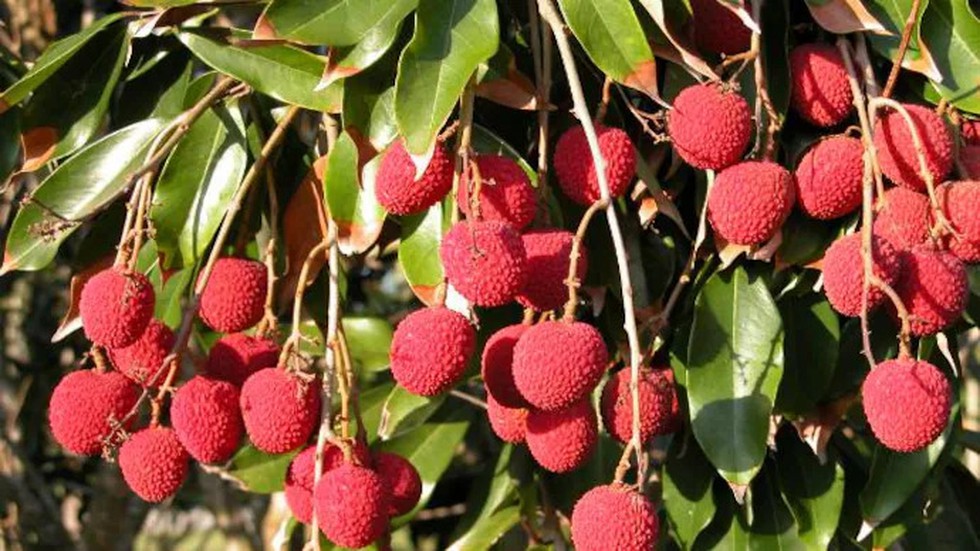
About Litchis:
- It is a delicious juicy fruit of excellent quality. Botanically it belongs to the Sapindaceae
- The translucent, flavoured aril or edible flesh of the litchi is popular as a table fruit in India.
- Litchis are believed to have arrived in India from China over 300 years ago.
- Required climatic condition
- Litchi is a sub-tropical fruit and thrives best under moist sub-tropical climate.
- It usually prefers low elevation and can be grown up to an altitude of 800 m.
- Soil:Deep, well drained loamy soil, rich in organic matter and having pH in the range of 5.0 to 7.0 is ideal for the crop.
- Temperature: The temperature should not go beyond 40.5 0C in summer and below freezing point in winter.
- Rain: Prolonged rain may be harmful especially at the time of flowering, when it interferes with pollination.
- The young trees require protection against frost and hot winds for several years till they are firmly established, even though some variation in temperature is necessary for proper fruiting of trees.
- Frost during winter and dry heat in summer are limiting factors for its successful cultivation.
- Distribution: In India, commercial cultivation was traditionally restricted to the north in the foothills of Himalayas from Tripura to Jammu & Kashmir and plains of Uttar Pradesh and Madhya Pradesh.
- India is the second largest producer of litchi in the World after China. Other major producing countries are Thailand, Australia, South Africa, Madagascar and Florida in the US.
Prelims Pointers
June 29, 2025
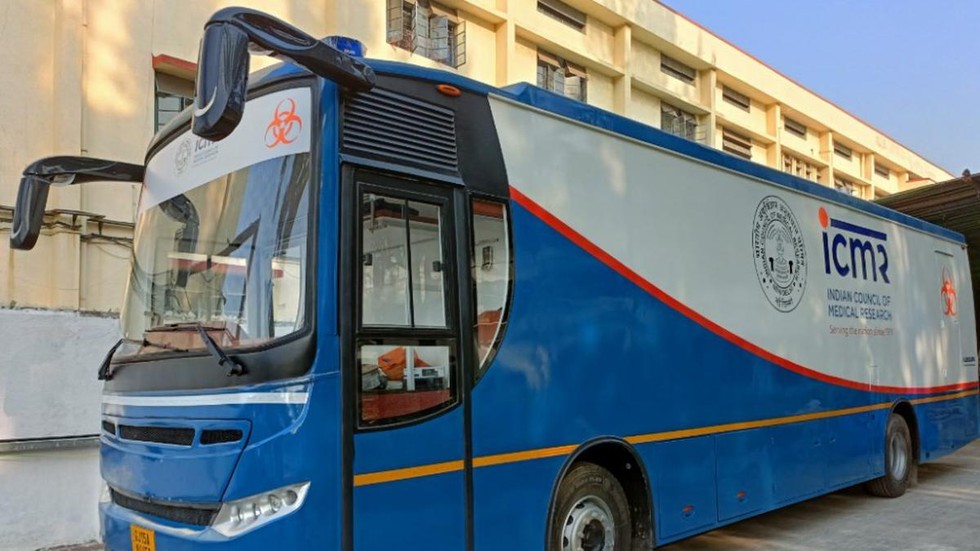
About Mobile Biosafety level-3 Laboratory:
- It is also known as Rapid Action Mobile BSL-3 Advanced Augmented Network (RAMBAAN).
- It is a fully indigenous and sophisticated Mobile BSL-3 ‘laboratory on wheels’, first deployed in response to the Nipah virus outbreak in Kerala in 2023.
- It is developed under the Pradhan Mantri Ayushman Bharat Health Infrastructure Mission in collaboration with Klenzaids Contamination Controls Pvt. Ltd., Mumbai.
- It’s classified as a Type-IV Rapid Response Mobile Laboratory in the WHO’s Global Outbreak Alert and Response Network classification.
- Features
- It is designed to maintain a negative air pressure environment, and is equipped with an advanced heating, ventilation, and air-conditioning (HVAC) system with HEPA filters.
- It also features a double door autoclave and a biological liquid effluent decontamination (BLED) and hydrogen peroxide (H2O2) fogger system for biological waste management.
- The MBSL-3 was validated by ICMR-National Institute of Virology, Pune in 2022-2023, including onsite and on-field validation.
- Significance
- It enhances India’s outbreak response capabilities, and strengthens public health delivery, especially in remote and inaccessible areas.
Prelims Pointers
June 29, 2025
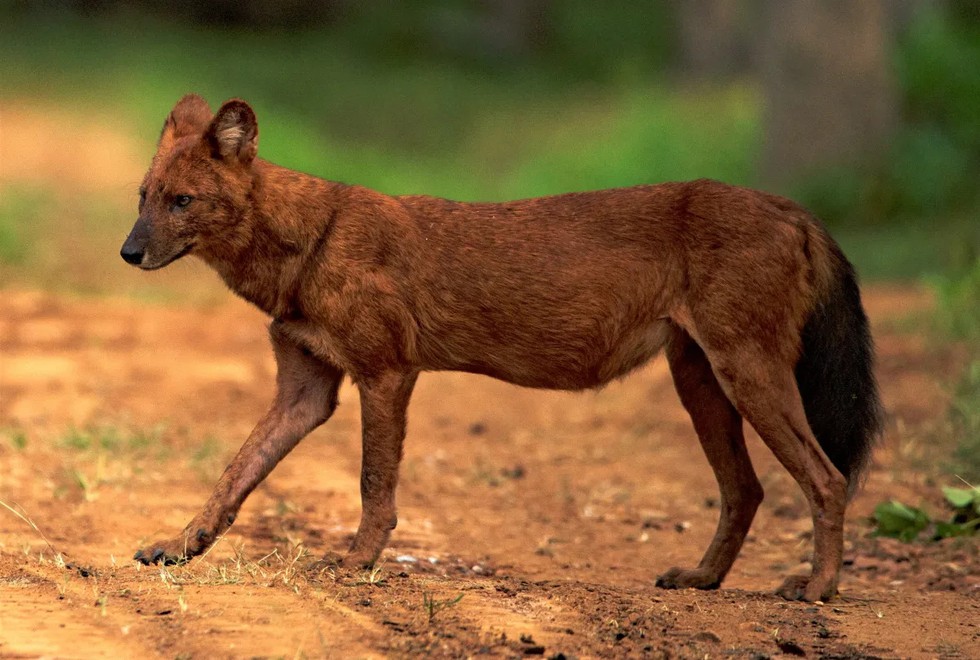
About Asiatic Wild Dog:
- It is a wild canid carnivorous species.
- Other Names:Indian wild dog, whistling dog, red wolf, red dog and mountain wolf.
- Habitat: Dholes are animals that inhabit dense jungles, steppes, mountains, scrub forests, and pine forests.
- Distribution:
- They are found throughout Central, Eastern Asia and Southeastern Asia.
- In India, they are found in three clusters across India, namely the Western and Eastern Ghats, the central Indian landscape and North East India. The Western and Eastern Ghats is a stronghold region for dholes.
- Conservation status:
- IUCN Red List: Endangered
- CITES: Appendix II
- Wildlife Protection Act 1972: Schedule II
- Threats: Habitat degradation, prey depletion, and retaliatory killings.
Key facts about Kaziranga-Karbi Anglong Landscape
- It is a critical part of the Indo-Burma Biodiversity Hotspot.
- This area has been known as the North Bank Landscape which covers the south of the Brahmaputra river in Assam.
- It is home to about half of Assam’s elephant population, more than 70 per cent of Assam’s tigers and close to 90 per cent of the rhino population of India.
June 28, 2025
Prelims Pointers
June 28, 2025

What are GLP-1 Drugs?
- GLP-1 (Glucagon-Like Peptide-1) is a naturally occurring gut hormone (incretin) released after food intake.
- It plays a crucial role in regulating blood sugar, lipid metabolism, and appetite.
- GLP-1 receptor agonists are synthetic drugs that mimic this hormone, binding to its receptors to activate similar physiological responses.
- These drugs are mainly injectables, though oral versions are under development.
- Examples: Two leading GLP-1 drugs are:
- Semaglutide (by Novo Nordisk)
- Tirzepatide (by Eli Lilly)
- Both have been introduced in India and are transforming obesity and diabetes treatment.
How Do GLP-1 Drugs Work?
- These drugs act by:
- Increasing insulin secretion when glucose is high.
- Inhibiting glucagon release, reducing liver glucose output.
- Slowing gastric emptying, preventing sudden spikes in blood sugar.
- Suppressing appetite, making the person feel full sooner.
- Tirzepatide additionally mimics GIP (Glucose-dependent Insulinotropic Polypeptide) for dual action.
Genesis and Development
- Though incretins were first discussed in 1906, their potential was recognised only after insulin's discovery in 1921.
- The hormone GLP-1 was isolated in 1986.
- Initial trials in the 1990s showed promising results, but the hormone was unstable.
- Novo Nordisk developed liraglutide (daily injectable) and later semaglutide (weekly), which had greater weight loss efficacy and fewer side effects when doses were carefully adjusted.
Prelims Pointers
June 28, 2025

What is Statistics Day?
- Statistics Day is celebrated annually on 29th June to commemorate the birth anniversary of Prof. Prasanta Chandra Mahalanobis, a pioneering Indian statistician and planner.
- The day aims to create awareness, especially among the youth, about the importance of statistics in socio-economic planning and evidence-based policymaking.
- Theme of Statistics Day 2025: “75 Years of National Sample Survey”
- It highlights the long-standing contribution of the National Sample Survey (NSS) in providing reliable, timely, and large-scale socio-economic data essential for governance and national development.
- Organised by: Ministry of Statistics and Programme Implementation (MoSPI)
About Prasanta Chandra Mahalanobis
- Birth: 29 June 1893
- Known as the Father of Indian Statistics.
- Creator of Mahalanobis Distance – a key statistical metric for multivariate data analysis.
- Founder of the Indian Statistical Institute (ISI) in 1931.
- Established the National Sample Survey (NSS) in 1950.
- Member of India’s First Planning Commission, contributed to Five-Year Plans.
- Awarded the Padma Vibhushan for his contribution to science and statistics.
- Advocate of data-based governance and
Other Important Facts
- National Statistics Day was first celebrated in
- World Statistics Day is observed by the United Nations every five years on 20th October.
Prelims Pointers
June 28, 2025

What is DNA?
- DNA (Deoxyribonucleic Acid) is the hereditary material found in almost all human cells – blood, skin, bone, teeth, etc.
- Humans have 46 chromosomes:
- 23 inherited from the father (via sperm)
- 23 inherited from the mother (via egg)
- Genes within chromosomes determine physical traits and biological identity.
DNA Polymorphisms
- DNA polymorphisms are variations in DNA sequences unique to individuals.
- Useful for:
- Parentage identification
- Genetic lineage tracing
- Identity verification in Forensic Science
- Enable accurate matching between body samples and known relatives.
Short Tandem Repeats (STRs)
- STRs are short, repeating sequences of DNA bases (e.g., GATCGATC).
- Each individual has a unique STR pattern, making them ideal for:
- Criminal investigations
- Forensic victim identification
- Ancestry and paternity testing
- STRs are inherited, providing strong evidence for genetic relationships.
Polymerase Chain Reaction (PCR) in DNA Amplification
- PCR is a technique to amplify small amounts of DNA for analysis.
- Steps involved:
- DNA Extraction from bones, blood, or tissue
- Denaturation (95°C): DNA strands are separated
- Annealing (60°C): Primers bind to specific DNA sequences
- Extension (72°C): DNA polymerase builds new strands
- Cycling: Steps are repeated to create millions of DNA copies
DNA Fingerprinting
- A DNA fingerprinting is a unique genetic profile built using STR variations.
- Capillary Electrophoresis separates STR fragments based on size using electric current.
- Final output is a distinct DNA profile, unique to each person (except identical twins).
- Sources for DNA: blood, saliva, bone, teeth, skin cells, sweat, semen.
Prelims Pointers
June 28, 2025
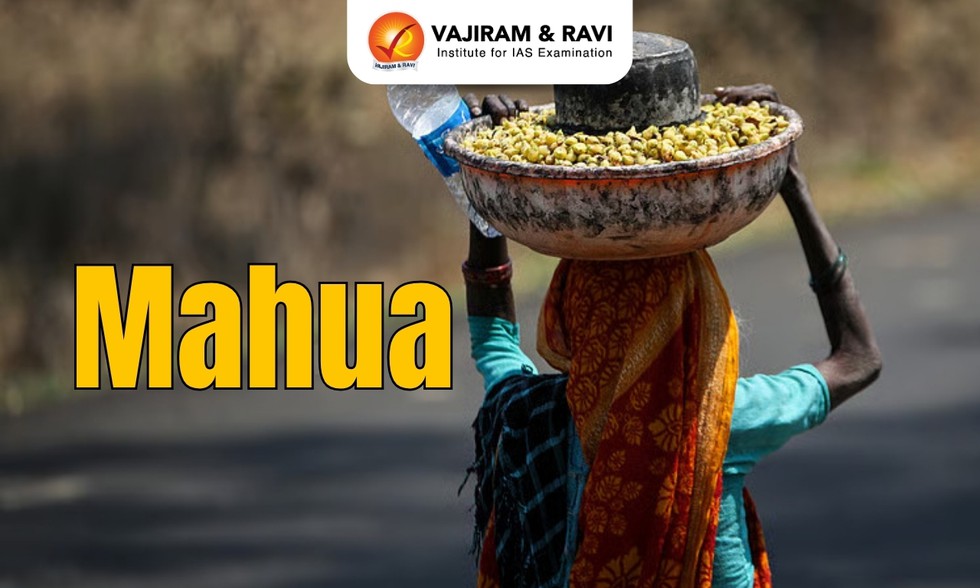
About Mahua
|
Aspect |
Details |
|
Botanical identity |
The Mahua tree (Madhuca longifolia) is a medium-sized deciduous tree that grows to a height of 16–20 metres, predominantly found in the forests of Central India. |
|
Seasonal blooming cycle |
The tree produces creamy-white flowers between March and April, which fall before dawn. The fruits ripen from June to August. |
|
Cultural and Religious Value |
Mahua is revered as a “Tree of Life” among tribal communities and is considered sacred. Its flowers, leaves, fruits, seeds, and even fruit shells are used in everyday tribal practices, including funeral rites. |
|
Geographical distribution |
It is commonly found in West Bengal, Odisha, Chhattisgarh, Jharkhand, Bihar, parts of Northern and Central India, and also in Maharashtra, Gujarat, Telangana, Tamil Nadu, and Kerala. |
|
Nutritional and Economic Role |
The flowers are consumed raw or sun-dried and are highly nutritious. They are traditionally fermented to produce a strong alcoholic drink, which is a major source of livelihood for tribal families. |
|
Livelihood support |
The collection and processing of Mahua flowers support tribal economies, offering food security, employment, and income generation, especially for women collectors. |
|
Ecological importance |
Mahua’s night-blooming, strong-smelling flowers attract bats, aiding in pollination and seed dispersal. Sloth bears and other forest animals also feed on its flowers, showing its importance in the forest food web. |
|
Inter-species Competition |
Sloth bears and humans often compete for Mahua flowers and leaves, indicating their high ecological and economic demand. |
|
Innovation and Value Addition |
A new product called Mahua Nutra Beverage has been developed by TRIFED, in collaboration with the Foundation for Innovation and Technology Transfer (FIIT), to enhance tribal income. |
|
Nutritional enhancement |
The Mahua Nutra Beverage is blended with pomegranate juice to improve aroma, flavour, texture, and nutritional value, while masking the strong Mahua flavour. |
|
Policy significance |
This is the first such initiative in Jharkhand and in India, reflecting TRIFED’s focus on value addition of Minor Forest Produce (MFP) through scientific innovation and technology transfer. |
Prelims Pointers
June 28, 2025

About Nuvvuagittuq Greenstone Belt
- The Nuvvuagittuq Greenstone Belt is a region of ancient rock formations located on the eastern shore of Hudson Bay in Quebec, Canada.
- These rocks have been known for their exceptional age and unique geological features, making the region a critical site for studies of Earth’s early history.
- This makes them potentially the oldest known rocks on Earth, challenging earlier estimates and rivalling other ancient formations like the Acasta Gneiss Complex (∼4 billion years old).
Scientific Significance
- Researchers use radiometric dating, which tracks the decay of radioactive isotopes over time.
- Earth formed around 5 billion years ago, but most early rocks were destroyed or transformed due to tectonic activity and melting.
- Rocks older than 4 billion years are extremely rare and provide a window into the planet's earliest crust.
- The rock site lies on Inuit tribal land in Inukjuak, Nunavik.
- Due to environmental damage from earlier research and reports of rock samples being sold online, the local Inuit community has restricted further sampling.
- The community, led by the Pituvik Landholding Corporation, seeks to collaborate with scientists to create a provincial park to balance research and conservation.
What are Ultramafic Rocks?
- Ultramafic rocks are dark-colored igneous or meta-igneous rocks rich in Magnesium Oxide (MgO) and Iron Oxide (FeO), but low in Silica.
- They contain over 90% mafic minerals, and are poor in potassium.
- The Earth’s mantle is believed to be composed predominantly of ultramafic rock types.
- These rocks are commonly found in orogenic (mountain-forming) belts and can offer insights into mantle composition and deep Earth processes.
Prelims Pointers
June 28, 2025

About Jellyfish:
- It is an ancient and resilient gelatinous zooplankton of the phylum Cnidaria.
- These are highly adaptable marine organisms with simple anatomy, stinging tentacles and efficient jet propulsion.
- Characteristics of Jellyfish
- These are simple invertebrates, members of the phylum Cnidaria, which includes creatures such as sea anemones, sea whips, and corals.
- The body parts of a jellyfish radiate from a central axis. This “radial symmetry” allows jellyfish to detect and respond to food or danger from any direction.
- They are pretty simple, lack brains, blood, or even hearts.
- They are composed of three layers: an outer layer, called the epidermis; a middle layer made of a thick, elastic, jelly-like substance called mesoglea; and an inner layer, called the gastrodermis.
- Jellyfish have the ability to sting with their tentacles.
- Ecological Impact of Jellyfish
- They play essential roles in marine food webs as both predators and prey.
- Its populations can explode into dense “blooms” under favourable conditions — events increasingly driven by human-induced and environmental stressors.
- These blooms disrupt marine ecosystems by reducing biodiversity, outcompeting native species and collapsing fish and invertebrate populations.
- They also pose economic and operational challenges by clogging fishing nets, damaging aquaculture gear, blocking power plant intakes and affecting tourism.
Prelims Pointers
June 28, 2025

About Silica Gel Desiccant:
- Silica gel desiccants are common moisture adsorbing agents used throughout many industries worldwide.
- The silica gel desiccant removes excess moisture from the air.
- Composition of Silica Gel Desiccant
- It is made of silicon dioxide (like most sands or quartz) which is a hydrophilic or water-loving material.
- Some variants of silica gel contain a moisture-sensitive dye. One particular variant is based on cobalt chloride.
- Working
- The beads are porous on the nano-scale with pore sizes only 15 times larger than the radius of their atoms.
- These pores have a capillary effect, meaning they condense and draw moisture into the bead similar to how trees transport water through the channelled structures in wood.
- In addition, sponge-like porosity makes their surface area very large. A single gram of silica gel can have an area of up to 700 square metres.
- Application of Silica Gel Desiccant
- It can be used in safeguarding sensitive and effective raw materials like electronics, pharmaceuticals, food, or precision instruments.
- It is used as a drying agent in industrial gases, and dehydration processes
- It is very useful in the control of moisture levels in the manufacturing, packaging, or storage of automotive parts and vehicles.
- It prevents the formation of rust and corrosion.
- It is uses in air conditioning systems i.e one can use silica gel in automotive air conditioning system to soak up excess moisture and keep your humidity levels at optimal levels.
Prelims Pointers
June 28, 2025

About Sagarmala Finance Corporation Limited:
- It is India’s first Non-Banking Financial Company (NBFC) in the maritime sector.
- It was formerly known as Sagarmala Development Company Limited.
- SMFCL —a Mini Ratna, Category-I, Central Public Sector Enterprise—has been formally registered as a Non-Banking Financial Company (NBFC) with the Reserve Bank of India (RBI).
- As a sector-specific NBFC, SMFCL is uniquely poised to bridge financing gaps in the maritime sector and catalyse economic growth.
- Functions: The Corporation will offer tailored financial products—including short, medium, and long-term funding—to a diverse range of stakeholders such as port authorities, shipping companies, MSMEs, startups, and maritime educational institutions.
- It will also support strategic sectors like shipbuilding, renewable energy, cruise tourism, and maritime education, further reinforcing India’s vision to emerge as a global maritime leader.
- It is set to provide a more focused and accessible financial ecosystem for India’s maritime growth, enabling projects that contribute to sustainable development, innovation, and national logistics efficiency.
- SMFCL is now positioned to play a transformative role in India’s maritime infrastructure development, in alignment with the Amrit Kaal Vision 2047.
Prelims Pointers
June 28, 2025

About Sugamya Bharat App:
- It is a flagship initiative of the Government of India dedicated to enhancing accessibility for divyangjan and elderly citizens in India.
- It was launched in 2021 by the Department of Empowerment of Persons with Disabilities (DEPwD), Union Ministry of Social Justice and Empowerment.
- Features of App
- Users can easily upload geo-tagged photos of locations where accessibility barriers exist, enabling authorities to take prompt corrective action.
- It serves as an essential platform for citizens to report accessibility issues across public infrastructure, transportation, and information and communication technology (ICT) systems.
- It is a more intuitive and user-friendly interface.
- It is revamped to AI-powered chatbot support to assist users in real time
- Through this app one can get to know circulars and notifications about new initiatives related to accessibility
- Integration of government schemes and other valuable resources for persons with disabilities.
- It is available in 10 languages.
- Only accessibility related issues pertaining to Buildings, Transportation System and ICT (websites and TV viewing) can be registered at Sugamya Bharat App.
Prelims Pointers
June 28, 2025

About Kharai camel:
- It is indigenous to Gujarat, derives its name from the local term “Khara,” meaning saline, reflecting its adaptability to both desert and coastal ecosystems.
- The Kharai is known for its rare ability to swim long distances and graze on mangroves.
- The camels swim long distances in the sea to reach its grazing areas, usually more than 3 km at a time even in deep waters.
- It has been preserved by the Rabari and Fakirani Jat tribes for over 400 years
- These camels exist, primarily in Kutch, where they play a crucial role in local ecosystems, particularly in maintaining mangrove forests.
- Kharai camel milk is not only rich in nutrients but also has therapeutic properties.
- The milk contains antibodies that are similar to those found in human milk, making it easier to digest and beneficial for boosting the immune system.
- Conservation Status
- IUCN: Endangered
- Threats: The steadily decreasing mangroves because of heavy industrialisation along the coast have affected the traditional grazing routes.
June 27, 2025
Prelims Pointers
June 27, 2025

About K-6 Missile:
- It is a nuclear-capable submarine-launched ballistic missile (SLBM).
- It is under development at DRDO’s Advanced Naval Systems Laboratory in Hyderabad.
- It is designed specifically for the advanced S-5 class SSBNs (nuclear-powered ballistic missile submarines) of the Indian Navy.
- Larger than the Arihant, the S-5 will be 12 metres long, 2 metres wide, and capable of carrying two to three tonnes of warheads.
- Features:
- It is a hypersonic SLBM capable of reaching speeds up to Mach 7.5—or approximately 9,261 kilometres per hour.
- This staggering speed dramatically reduces enemy reaction time and makes interception by conventional missile defence systems virtually impossible.
- The K-6 missile boasts an impressive range of 8,000 kilometers. India has previously tested the K-3 (1,000 to 2,000 km range), K-4 (3,500 km range), and K-5 (5,000 to 6,000 km range) SLBMs, with the K-4 and K-5 already inducted into the Navy.
- The missile is capable of carrying both nuclear and conventional warheads, offering strategic flexibility in both wartime and deterrent scenarios.
- It is being designed with MIRV (Multiple Independently Targetable Reentry Vehicle) capability—allowing a single missile to carry and deploy multiple warheads at different targets.
Prelims Pointers
June 27, 2025
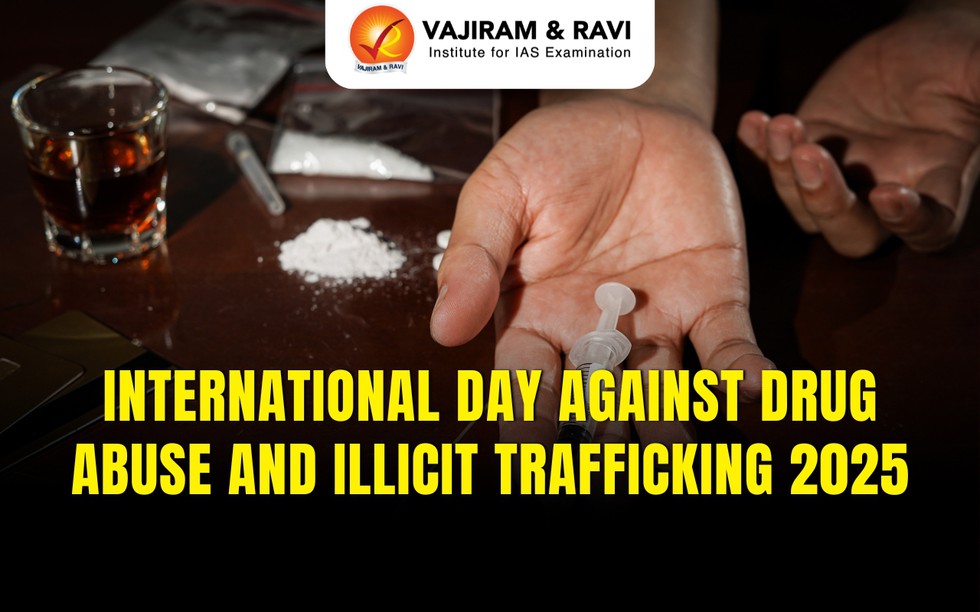
About International Day against Drug Abuse and Illicit Trafficking:
- The International Day against Drug Abuse and Illicit Trafficking, or World Drug Day, is marked on 26 June every year, to strengthen action and cooperation in achieving the goal of a world free of drug abuse.
- History:
- It was established by the United Nations General Assembly in December 1987, following the recommendation of the International Conference on Drug Abuse and Illicit Trafficking.
- The observance was created to strengthen global action and cooperation to combat drug abuse and trafficking.
- Each year, the United Nations Office on Drugs and Crime (UNODC) selects a theme for the day, focusing on specific aspects of the global drug problem and promoting strategies to address it effectively.
- The theme for 2025, "Break the cycle. #StopOrganizedCrime," highlights the need for coordinated long-term action to break the cycle of organized crime and drug trafficking by addressing root causes, investing in prevention, and building stronger health, education, and social systems.
- Every year, UNODC issues the World Drug Report, full of key statistics and factual data obtained through official sources, a science-based approach, and research.
- Following is the Drug Use Statistics 2025:
- Over 300 million people aged 15-64 worldwide have used drugs in the past year.
- Cannabis use has increased by 25% in the last decade, with rising concerns over synthetic opioids like fentanyl and methamphetamine.
- 1 in 8 people with substance use disorders receive treatment, highlighting the urgent need for improved healthcare access.
- The global drug trade generates over $400 billion annually, fueling organized crime, corruption, and violence.
Prelims Pointers
June 27, 2025

About Per- and polyfluoroalkyl substances (PFAS):
- PFAS, also known as the Forever Chemicals, are a large chemical family of over 4,700 highly persistent, toxic, man-made, hazardous chemicals.
- They have been used in consumer products around the world since about the 1950s.
- They are ingredients in various everyday products. For example, PFAS are used to keep food from sticking to packaging or cookware, make clothes and carpets resistant to stains, and create firefighting foam that is more effective.
- PFAS molecules have a chain of linked carbon and fluorine atoms. Because the carbon-fluorine bond is one of the strongest, these chemicals do not degrade easily in the environment.
- How Are People Exposed to PFAS?
- Human exposure to PFAS is widespread but variable by geography and occupation.
- PFAS are used in the aerospace, automotive, construction, and electronics industries. Over time, PFAS may leak into the soil, water, and air.
- People are most likely exposed to these chemicals by consuming PFAS-contaminated water or food, using products made with PFAS, or breathing air containing PFAS.
- Because PFAS breaks down slowly, if at all, people and animals are repeatedly exposed to them, and blood levels of some PFAS can build up over time.
- Impacts of PFAS on Human Health: A variety of health risks that are attributed to PFAS exposure, including decreased fertility, developmental effects in children, interference with body hormones, increased cholesterol levels, and increased risk of some cancers.
- Regulation: The Stockholm Convention has listed some PFAS, such as Perfluorooctane sulfonic acid (PFOS) and Perfluorooctanoic acid (PFOA), as persistent organic pollutants (POPs).
Prelims Pointers
June 27, 2025

About Falkland Islands:
- Also known as the Malvinas Islands, the Falkland Islands is an internally self-governing overseas territory of the United Kingdom in the South Atlantic Ocean.
- It lies about 480 km northeast of the southern tip of South America and a similar distance east of the Strait of Magellan.
- It consists of two main islands, East Falkland and West Falkland, together with 776 smaller islands.
- The two large islands are separated by the Falkland strait.
- The islands are positioned both in the southern and western hemispheres of the Earth.
- It covers a total area of 12,173 sq.km.
- Capital: The capital and major town is Stanley, on East Falkland.
- Climate: A cool temperate oceanic climate that is characterised by its lack of extremes.
- Demographics: The population is English-speaking and consists primarily of Falklanders of African-Irish descent (88% of population).
- Economy: The economy was formerly based on agriculture, mainly sheep farming, but fishing and tourism currently comprise the bulk of economic activity.
- Currency: The official currency is the Falkland pound, which is on par with the British pound.
- History:
- At various times, the islands have had French, British, Spanish, and Argentine settlements.
- Britain reasserted its rule in 1833, although Argentina maintains its claim to the islands.
- In April 1982, Argentine forces temporarily occupied the islands.
- British administration was restored two months later at the end of the Falklands
- Most Falklanders favour the archipelago remaining a UK overseas territory, but its sovereignty status is part of an ongoing dispute between Argentina and the United Kingdom.
- Government:
- Executive authority is vested in the British crown, and the islands’ government is headed by a governor appointed by the crown.
- The islands are self-governing, although foreign affairs and defence matters are handled by the British government.
- The government of the Falkland Islands also administers the British overseas territory of South Georgia and the South Sandwich Islands, including the Shag and Clerke rocks, lying from 700 to 2,000 miles (1,100 to 3,200 km) to the east and southeast of the Falklands.
- Wildlife:
- Rich in seabird and marine life.
- Home to five species of penguins, sea lions, elephant seals, and albatrosses.
Prelims Pointers
June 27, 2025

About Trigeminal neuralgia:
- Trigeminal neuralgia, also known as tic douloureux, is a condition that causes intense pain similar to an electric shock on one side of the face.
- Cause:
- It affects the trigeminal nerve, which carries signals from the face to the brain.
- It happens when a blood vessel puts pressure on the trigeminal nerve.
- The pain comes suddenly and can be triggered by simple activities like eating, brushing teeth, or even smiling.
- People with trigeminal neuralgia may at first experience short, mild episodes of pain. But the condition can get worse, causing longer periods of pain that happen more often.
- It's more common in women and people older than 50.
- It is a chronic disorder, and the pain can be difficult to manage, often needing medication or even surgery.
- It is often called the "suicide disease" because of how painful it can be.
Prelims Pointers
June 27, 2025
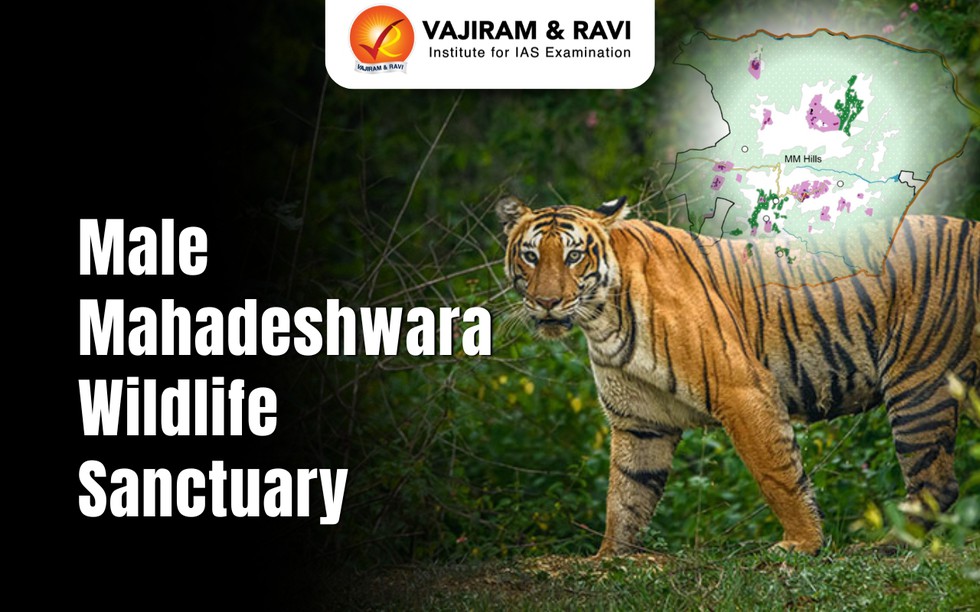
About Male Mahadeshwara Wildlife Sanctuary:
- Location: It is located in the intersection of the Western and the Eastern Ghats and falls in the Chamarajanagara district of Karnataka
- It was declared a Wildlife Sanctuary in 2013.
- It is contiguous to BRT Tiger Reserve, Sathyamangalam Tiger Reserve and the Cauvery Wildlife Sanctuary.
- Vegetation: The forests of MM Hills wildlife sanctuary are principally of dry deciduous type degrading to scrub forest in the fringe areas, and are interspersed with patches of moist deciduous, semi-evergreen, evergreen and shola forests occurring at varying altitudes.
- Flora: Anogeissus latifolia, Boswellia serrata, Hardwikia binata and Chloroxylon swietenia etc.
- Fauna: Animals including tiger, elephant, leopard, wild dog, bison, sambar, spotted deer, barking deer.
Prelims Pointers
June 27, 2025

About Registrar General of India:
- In 1949, the Government of India established a permanent organisation under the Ministry of Home Affairs, headed by the Registrar General and Ex-Officio Census Commissioner of India.
- This position’s role is mainly to ensure a systematic collection of statistics related to India’s population size, growth and distribution.
- The RGI is also responsible for implementing the Registration of Births and Deaths Act, 1969.
- The Registrar General is typically a civil servant of Joint Secretary rank.
- The office also conducts demographic and linguistic surveys in addition to the decennial Census.
- Key Functions of the RGI
- Conducting the Census of India: The Census of India offers detailed data about the demographic, socio-economic and geographic characteristics of the population.
- Linguistic Survey of India (LSI): Conducted alongside the decennial Census, this survey provides a comprehensive picture of the linguistic diversity in India.
- The first Linguistic Survey was completed by George Abraham Grierson in 1928.
- Civil Registration System (CRS): It is a mandatory system for birth and death registration in India.
- It serves as a real-time, continuous population data collection mechanism.
- A birth certificate is issued by the registrar in accordance with Section 12 of the Registration of Births and Deaths (RBD) Act, 1969. The RBD Act, 1969 which was amended in 2023, mandates registration of all births and deaths on the Centre’s portal from October 1, 2023.
Prelims Pointers
June 27, 2025

About Adamya Fast Patrol Vessel:
- It is the first in the series of 8 being developed by the Goa Shipyard Limited under the prestigious '8 FPV Project'.
- Features
- It features Controllable Pitch Propellers (CPPs) and indigenously developed gearboxes, offering superior maneuverability, operational flexibility, and enhanced performance at sea.
- The vessel is equipped with state-of-the-art technology, including a 30mm CRN-91 gun, two 12.7mm stabilized remote-control guns with fire control systems, an Integrated Bridge System (IBS), an Integrated Platform Management System (IPMS), and an Automated Power Management System (APMS).
- These advanced systems will empower the ICG to perform its charter of duties with increased precision, efficiency and responsiveness across India’s extensive maritime domain.
- It exemplifies India’s growing shipbuilding capability and represents a major stride towards the nation's vision of Aatmanirbhar Bharat.
- Significance: These FPVs will act as force multipliers in the ICG’s operational fleet, enabling swift response for maritime law enforcement, coastal surveillance, search and rescue operations, and the protection of India’s Exclusive Economic Zone (EEZ).
Prelims Pointers
June 27, 2025
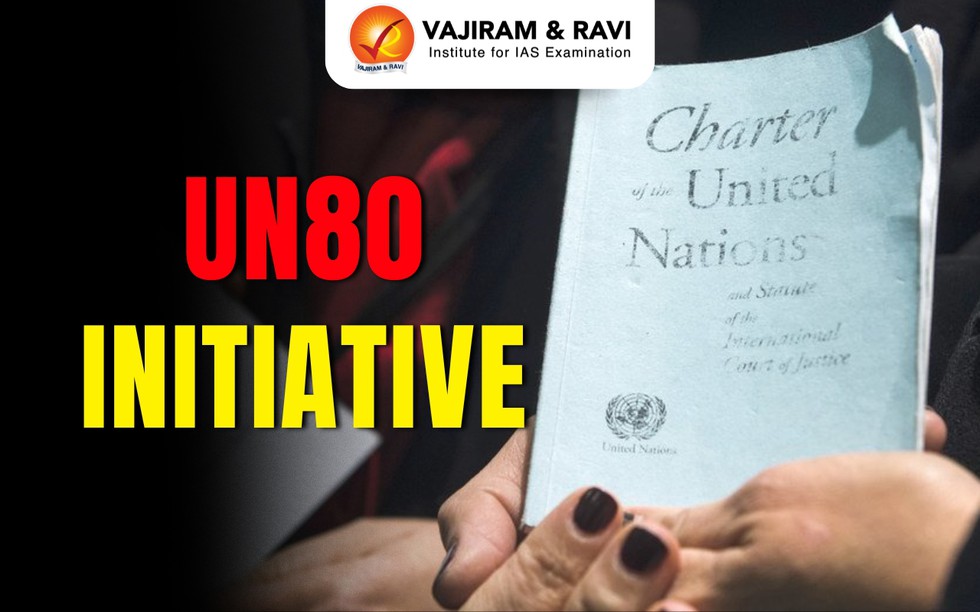
About UN80 Initiative:
- The UN80 Initiative wants to reaffirm the value of multilateralism at a time when confidence is low and the needs are high.
- It aims to strengthen the UN capacity to meet the global challenges of today – ranging from conflicts, travel and inequalities to climatic shocks and rapid technological changes.
- Objective: To improve the efficiency, effectiveness and transparency of the United Nations system.
- It wants to improve the impact and effect of multilateralism and the UN.
- It is structured around three key workstreams:
- Striving to rapidly identify efficiencies and improvements under current arrangements.
- Reviewing the implementation of all mandates given to us by Member States.
- Undertaking consideration of the need for structural changes and programme realignment across the UN system.
- Under this initiative seven thematic clusters are formed under the UN80 Task Force; each coordinated by senior UN leaders from across the system.
- These cover peace and security, humanitarian action, development (Secretariat and UN system), human rights, training and research, and specialised agencies.
Prelims Pointers
June 27, 2025

About Salkhan Fossil Park:
- It is also known as Sonbhadra Fossils Park located in the state of Uttar Pradesh.
- It is nestled amidst the verdant embrace of the Kaimoor Wildlife Sanctuary and within the Vindhyan mountain range.
- It is home to a rich repository of fossils dating back approximately 1.4 billion years, making it one of the oldest and most well-preserved fossil sites in the world.
- The site’s fossil assemblage, scattered across various formations, primarily features an exceptional collection of stromatolites, i.e. formations created by communities of cyanobacteria or blue-green algae.
- It is home to Prehistoric stromatolites and living relics of the Mesoproterozoic.
- Salkhan is much older than sites like Shark Bay in Australia and Yellowstone the USA.
- The site’s Proterozoic stromatolites illustrate a critical watershed in the early history of life on Earth: The Great Oxidation Event.
- Significance: The diversity of stromatolite morphologies at the park—ranging from domal to columnar structures—reflects dynamic environmental conditions in the Proterozoic, including variations in water depth, sedimentation, and wave activity.
- It falls under one of the key geo-heritage interest categories indicated by IUCN – ‘Evolution of life’ - in the 2020 ‘Guidelines for geoconservation in protected and conserved areas’.

